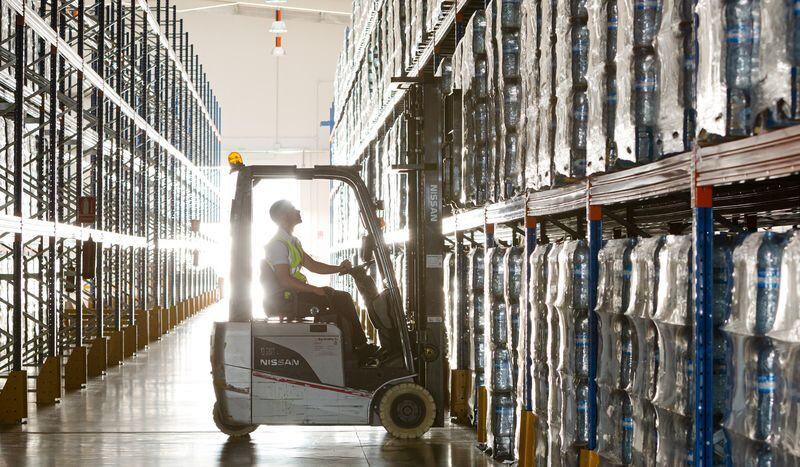POV: VP Manufacturing - Furniture SMB (Embracing Big Orders for a Small Business)
You’ve worked hard to build your small business. You’ve made a name for yourself and are building a brand. An email hits your inbox. It’s not an order. It’s THE order. A Fortune 500 company has decided to buy your product as part of a global rollout. You’ve finally made it. Then panic sets in. How can we meet their deadline? Can we meet the requirements of this order and keep our other customers happy? Should we even accept the PO?
I've spent my career working in various corners of business, from Fortune 10 enterprise to startups and small business. I cut my teeth in corporate logistics – contract & routing analysis, managing a private fleet, and enterprise contract management for Fortune 10 businesses. I then shifted focus to small business operations as a Vice President responsible for strategic growth and operational improvement at a casual furniture SMB. At this stop, we faced the challenge above as we built a brand and grew the company.
In the US, 98.6% of manufacturers are small businesses with fewer than 500 employees, and 75.3% have fewer than 20. To remain price competitive with large businesses and imports, American small businesses fight every day to efficiently meet normal levels of demand - with little slack built in for unplanned growth. Small businesses can’t afford to maintain a buffer to meet a small increase of business, much less an order that could double or triple plant output. Delivering on daily commitments requires all hands on-deck, with employees wearing many hats to get the job done. Rinse and repeat.
Small businesses have few options when faced with the issues of unexpected, large orders.
- Add to overtime - giving away margin and increasing attrition.
- Increase lead times – sacrificing service levels for either existing business, large order, or both.
- Quickly hire – risking quality and introducing administrative burden.
- Expedite shipping – clawing back a small portion of lead time while sacrificing a huge chunk of margin.
- Simply turn down the business – a painful decision for a business looking for growth.
Each of these have significant downsides – affecting owners and shareholders, employees, or customers depending on the chosen course of action.
Our company’s daily demand consisted of high SKU mix, small Direct To Customer (DTC), and Business to Business (B2B) orders, most requiring varying levels of customization, many with inflexible due dates. Trade shows, movie shoots, special events, award ceremonies all requiring a company logo and the name of the recipient added. Missing delivery dates meant refunding orders and scrapping components of customized products before restocking the usable frames. A seasonal surge for single piece customized gifts stressed our capacity. Amid this daily flow, and regardless of season, low-mix large orders would drop in – cosmetic companies with global marketing rollouts, beverage companies hosting events for hundreds of VIPs, fashion brands with limited time releases of branded merchandise. All would raise the profile of our company on a global scale – introducing the product to more potential daily customers.
We could not afford to lose our daily business to ship these large releases. Our daily customers kept the wheels of business turning between the large orders. As large order due dates were almost always inflexible, we would push customers to order early – with long lead times allowing us to ramp up, with overtime and hiring, to meet their requirements. When these lead times were truncated or ship dates missed by necessity or supply chain disruptions, we had to choose between risking the huge payout of a large order or alienating our consistent small customers. We expedited shipping without charge. We hired when necessary. We shuffled skilled workers into areas they weren’t cross-trained. We pushed and fought with all we had to get the orders out. We caught our breath and did it all again the time a large order dropped.
The ability to limitlessly scale labor capacity at a moment’s notice is a field-leveling superpower for a small business. What if we were able to scale capacity instantly to meet a project’s requirement, then instantly return operations to normal once the order shipped? Veryable’s On-demand Labor Platform would have made this a reality.
We would have used the daily ebb and flow of small orders to build a bench of skilled, trained, and ready to work Veryable operators – poised to address each bottleneck encountered with volume increases. When excess demand outstripped our trained labor pool, we could further bolster production with a near unlimited supply of material handlers to increase the speed and efficiency of skilled workers – ensuring the materials they need to complete assembly and customization are on hand.
With Veryable, we would have:
- Enabled immediate revenue growth of 30% by removing labor as a constraint.
- Avoided revenue loss of 3% and reduced FCOGS 10% by delivering 100% OTIF.
- Reduced labor COGS by 15% by eliminating 90% of overtime expenses.
- Reduced attrition by 15% and reduced the workload on supervisory staff.
When RTIC faced a similar challenge in their custom shop, they turned to Veryable. The performance and capacity of Veryable has allowed them to create a competitive advantage, offering lead times of 7-10 days vs 6 weeks for their peers. They also evaluate and upskill operators quickly, building surge capacity throughout RTIC’s custom department. Click video link below to hear the RTIC story from the leaders who are leveraging the platform to make huge operational improvements and grow their business.
If this scenario is playing out in your business, you can begin taking steps to build this superpower. Veryable gives your business access to over 750k+ skilled and vetted workers that are ready to jump in and support your operations. Veryable keeps your small business efficient, with instant scalability no other solution provides.
Don’t wait until that large order hits. Start building Your Labor Pool with Veryable now – capitalizing on daily opportunities along the way.
- Replace overtime hours – increasing normal production and reducing labor COGS.
- Cover callouts & PTO – preserving performance and giving FTEs flexibility.
- Upskill and cross-train operators during small to medium spikes
- Address seasonal surges with operators to further increase its size and reliability.
When that life-changing order hits, you don’t sweat it – embrace those large orders and meet the challenge with a resource you’re already built.
To learn more:
On-Demand Labor for Small Businesses
Homepage: Veryable for Executives
Previous Posts
Make The Most of The 100 Days of Summer With Veryable
The Future of Manufacturing and Logistics
Create a free business profile today to explore our platform.






